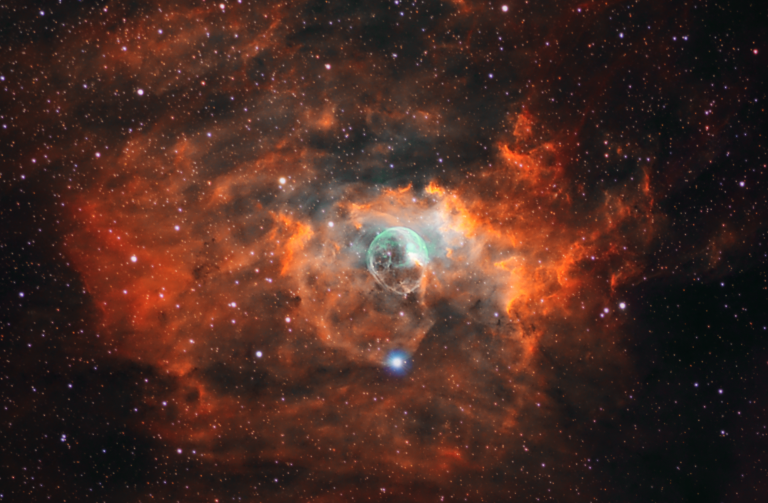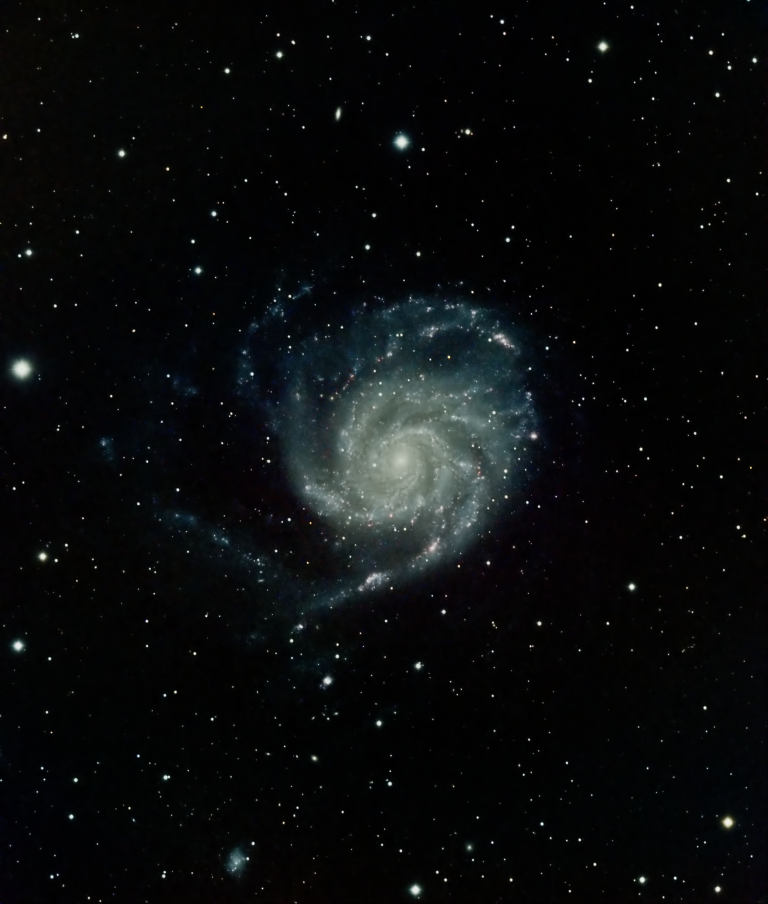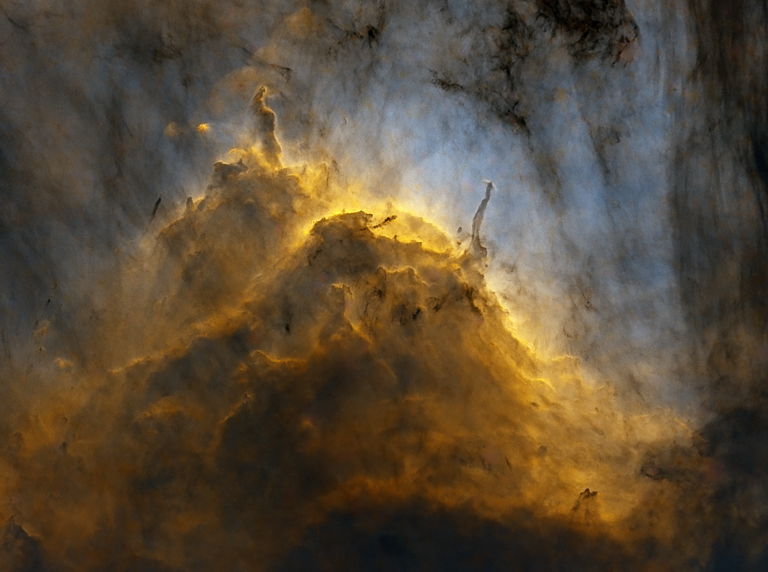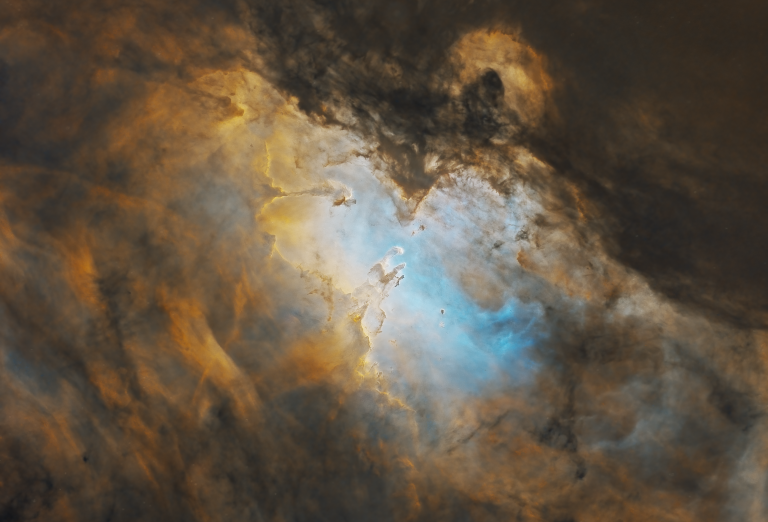The Triangulum Galaxy, Three ways
My first image from Starfront Observatories in Central Texas! They’ve been fantastic to work with so far, and I’m really stoked to be able to image remotely from anywhere, under clear, dark skies. While collecting data on M33, the “Triangulum Galaxy”, I was still fine-tuning everything and figuring things out – so there are things I’d do differently a second time around. But even so, I’m happy with the results. This galaxy is one of our nearest neighbors, at about 2.7 million light-years away… which is still unimaginably distant. It’s a particularly diffuse galaxy that is difficult to capture and process; there is no supermassive black hole at its center stirring things up.
But what’s really interesting about M33 is all the clouds of Hydrogen gas that are visible to us from here in the Milky Way. Those are nebulas in another galaxy, seen from the outside! They are also areas of active star formation.
I processed this one three different ways. In the “final image,” I combined natural colors taken though luminance, red, green, and blue filters with narrowband filters that isolate the emissions from ionized Hydrogen and Oxygen to really make those nebulas pop:
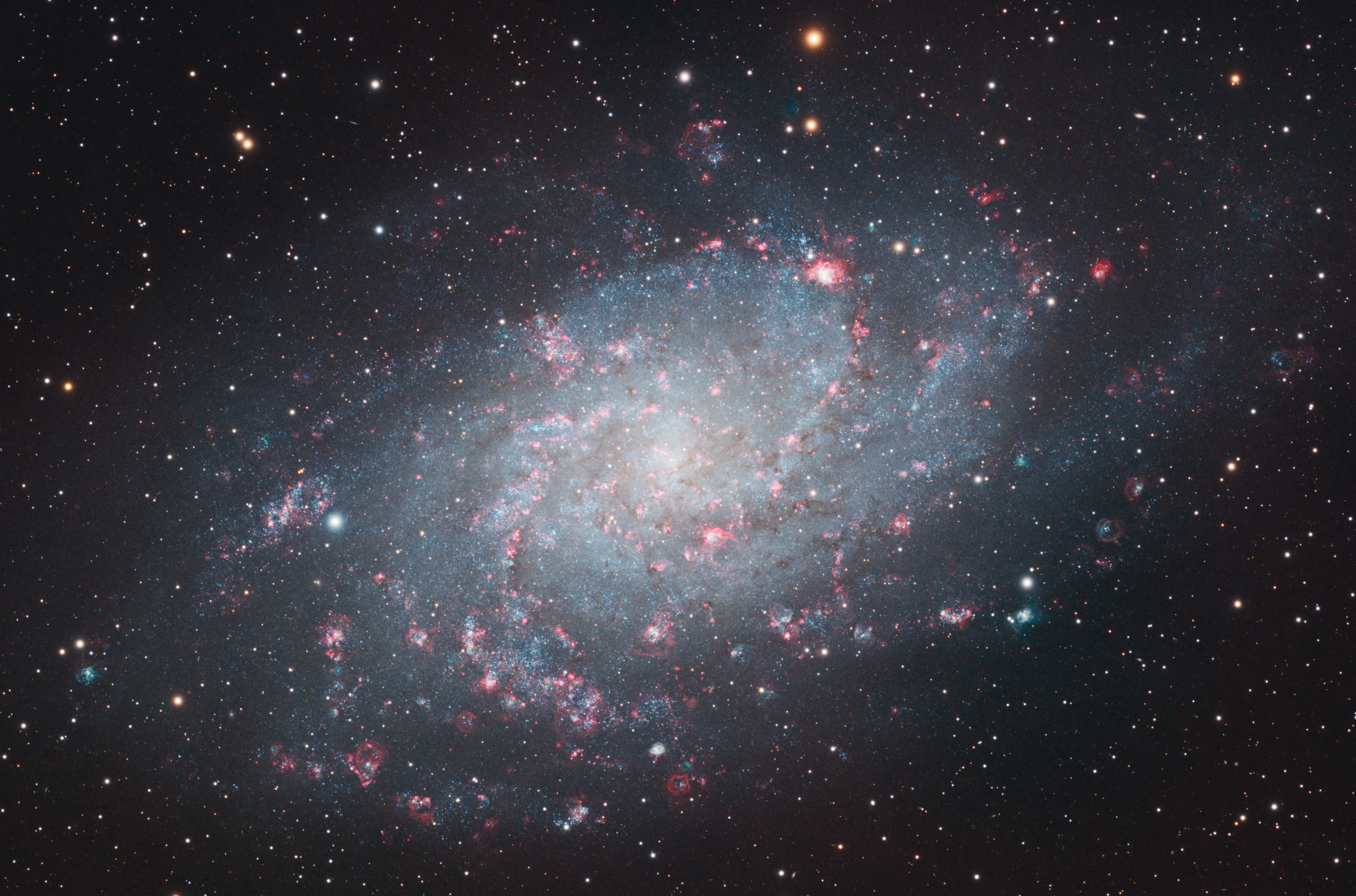
I love zooming on on those clouds and star clusters – it just blows my mind that we can see that much detail in ANOTHER GALAXY. It’s also fun to imagine what they must look like from inside the galaxy too.
Some people prefer a natural color view though, without narrowband enhancement. Here’s what that looks like:
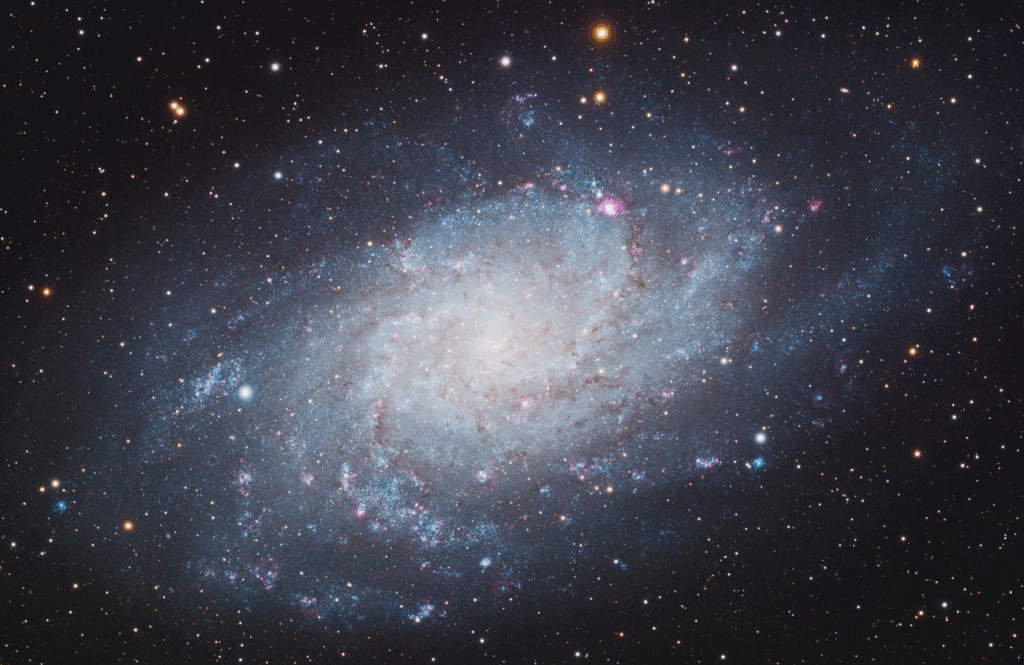
And here’s the opposite – JUST the Hydrogen emissions from the galaxy, isolating those fascinating, massive clouds of gas:

Zoom in and explore! Total exposure time was 38 hours collected over a week’s time.



